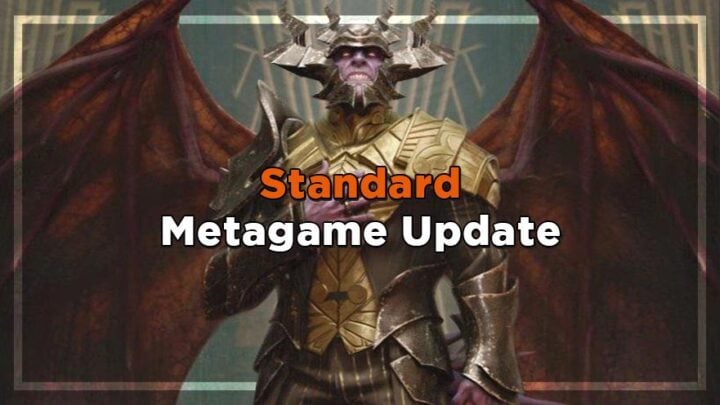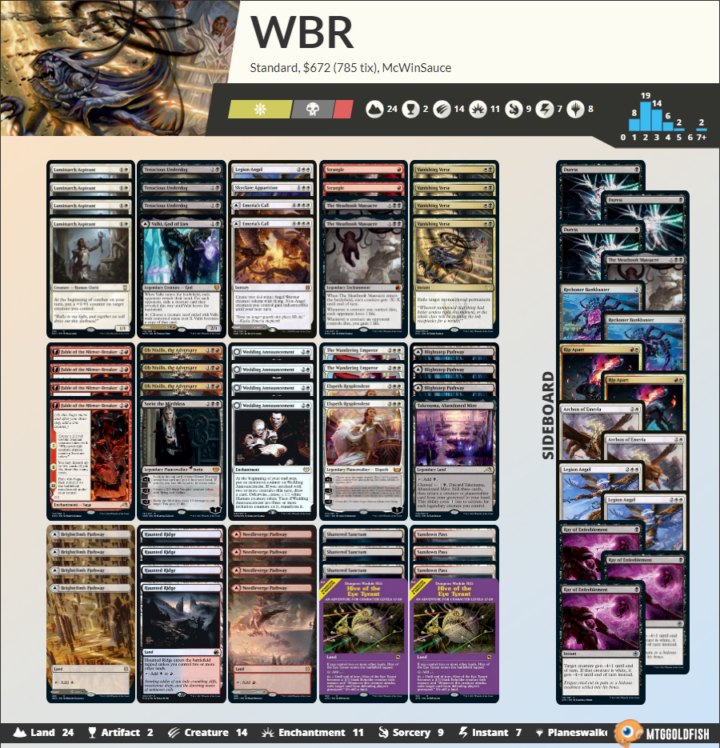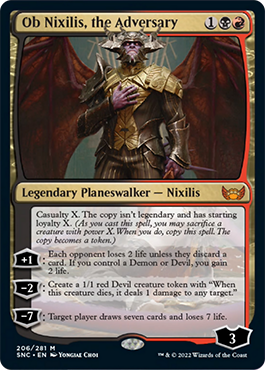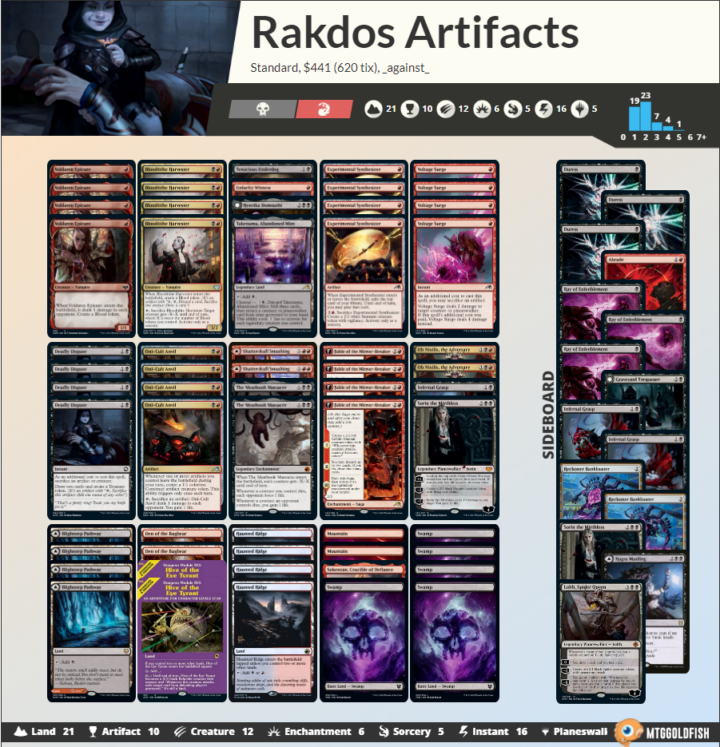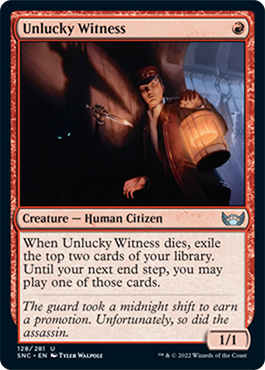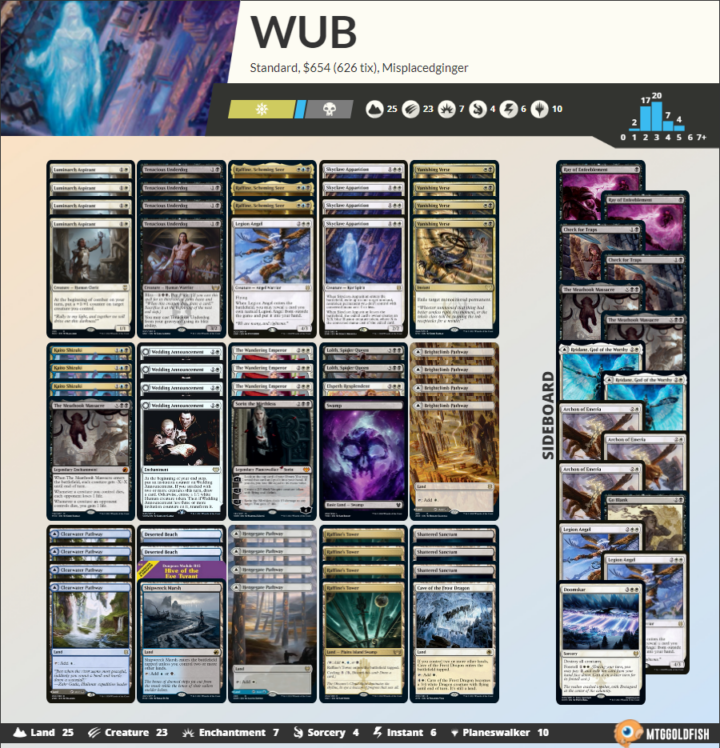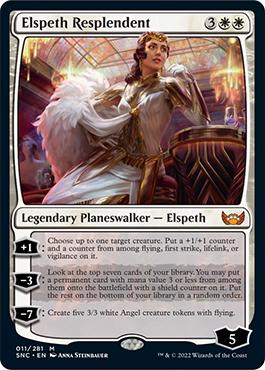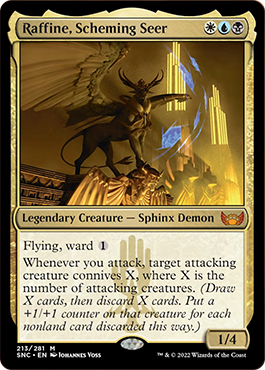With Streets of New Capenna officially on the Standard scene, Mason takes a look at some of the top decks in the format!
It’s been a while since we have covered Standard here in these articles. The last time we really checked in, Divide by Zero had just been banned. Now we are at the start of the long Streets of New Capenna Standard, and if Standard over the last year has taught me anything, it’s that decks will twist and turn and go through lots of iterations over the coming weeks.
Today we take a look at where the format is starting so you have some lists to play and start working on beating. All these lists are from the MTGO Standard Challenge this past weekend. Enough small talk – let’s jump in.
Mardu
Mardu is one of the decks that got ported over from the last format. Bolstering a strong midrange game plan packed to the brim with powerful planeswalkers and strong creatures, it’s an archetype that has been shown to stand the test of time. Actually, the last PTQ before Streets was released was won with a version of this deck in the hands of Carolyn Kavanagh in the VML finals.
The upgrades this deck got were great for the grindy nature of this deck. To start, Ob Nixilis, The Adversary has burst into Standard, excelling at making the opponent be light on resources. While life is often a resource you can be fairly liberal with, you eventually do have to care about it. This is something this deck takes full advantage of. While having lots of other walkers that generate advantage, it also has an aggressive slant, with cards like Luminarch Aspirant and Wedding Announcement. While your opponent can often take 4-6 damage from an Ob Nix and get away with the exchange fairly happily, that’s before we even consider the fact you could have been gaining life the whole time.
Another card that works well at pressuring our opponent’s life total is Tenacious Underdog. A totally reasonable body, a 3/2 for two mana means you can not only put pressure on your opponent but you also have a nice sacrifice for your Ob Nix. Underdog’s blitz ability from the graveyard is also a great way to use your mana and keep the action rolling.
Ultimately, if you’re looking for a grindy slugfest midrange deck, this is the one for you. You’re going to have long, drawn out games with inevitability that others can’t overcome.
Rakdos Artifact
One of the cooler decks from last format, Rakdos Artifact is back with a few small tools to upgrade the deck.
This deck is sporting both Ob Nix and Tenacious Underdog like our last deck. Both these cards do everything we talked about before, but are much more potent at it here. This is due to your deck being better at whittling away at your opponent’s life total thanks to cards like Meathook Massacre and Oni-Cult Anvil. While they are not bad in the Mardu deck, they are much easier slot-ins here, even if in lower numbers.
One other addition to this deck is Unlucky Witness. While only a one-of right now, I expect this card’s stock to rise in the coming weeks. It allows you to have another creature to sacrifice and keep the advantage churning. One problem with lots of sacrifice decks is they give up cards in order to push damage. So having a card like this helps mitigate that cost. I don’t think the full four are needed right now, but there are plenty of cards this could replace. As the metagame shakes out and we see if cards like Infernal Grasp line up well or not, we will see what could best move around in these slots. Also, if you increase the Ob Nix in this deck, you might want more of these than a card like Voldaren Epicure.
Esper
Here is another take on a midrange deck much like the Mardu deck we started with. This deck also looks to use a pile of planeswalkers to grind your opponents into dust. Boasting over 10 in this deck, you are very much able to reach snowballing endgames.
The first new addition is Elspeth Resplendent. This version of Elspeth is one of the better ways to generate some value. Her plus ability works great with many of our creatures, and her ultimate helps us break up terribly clogged board states that everyone finds themselves in. Ultimately though, the minus-three is a huge draw for the deck. Often missed on the first pass, the card grabbed with this ability can be any nonland permanent. Which means cards like Kaito, Wedding Announcement, and all the normal threats you might expect can all be grabbed. Giving cards like Kaito a shield counter turns them into incredibly hard to answer threats. Same for powerhouse cards like Wedding Announcement.
Raffine is one of the cards that moves us into blue over red, and a great card to get powered up by Elspeth. Raffine is one of the more premier threats released in the new set, due to its ability to churn through your cards that line up poorly while quickly growing to be a must-answer threat. One part of Raffine that’s easy to miss is the ward 1. While in the mid-to-late game it’s a fairly easy cost to pay, in the early developing turns having a card that’s able to dodge on-curve answers can be back breaking. Combine this with the fact Raffine is a gold card meaning it dodges Vanishing Verse (one of the best answer spells in Standard), and you have set yourself up with a nice game-warping threat that starts snowballing advantage and board presence.
What deck are you enjoying most in Standard? Tweet @masoneclark_ and let me know!

Mason Clark is a grinder in every corner of the game who has played at the pro level and on the SCG Tour with Team Nova. Whether he’s competing in Standard, Historic or Modern, Mason plays with one goal in mind: to be a better player than he was the day before. Check out his podcast, Constructed Criticism, and catch his streams on Twitch.

